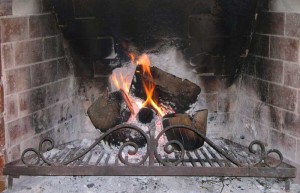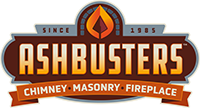Ashes do a great job of hiding and insulating hot coals and are often far from the cool gray powdery nothing they appear to be. In fact, in one four-year period, improper ash handling was implicated annually in nearly 10,000 house fires. Proper fireplace tools, fire gloves, and metal pails with lids are small investments in comparison to the homes they protect.
[raw] [/raw]
[/raw]
According to the CSIA, an inch of ash beneath the grate at the back of the fireplace is actually good for maintaining a fire. That is again because of those hot coals it contains sending heat back up to the wood. Ash should not rise to the grate, however, and the reasoning for leaving it there carries an implicit warning about the fire-starters within.
Equip Yourself for the Job
Fireplace tongs help to safely find larger coals and move them without placing your hand under the fire. A fireplace poker is useful for separating them and spreading them out to cool faster. A shovel is essential for safely moving ash and tiny still-hot bits of coal to an equally critical metal pail with a top.
Breaking large coals up into smaller ones causes them to rapidly burn. That is because you are exposing more coal surfaces to the fire, causing faster reactions. This should always be done carefully, though, by wearing fire gloves and breaking the coal against the firebrick at the back.
A Squeeze of Lime
All fireplace ash eventually needs to be removed. It is highly alkaline, so think before adding it to a compost pile or yard. Any gardening benefits ash may offer start with its safe handling inside the home and its ‘proper’ disposal outdoors. To chimney sweeps, “proper disposal” means no possibility of an unintended fire anywhere, and we are pretty sure the gardening professionals agree.
